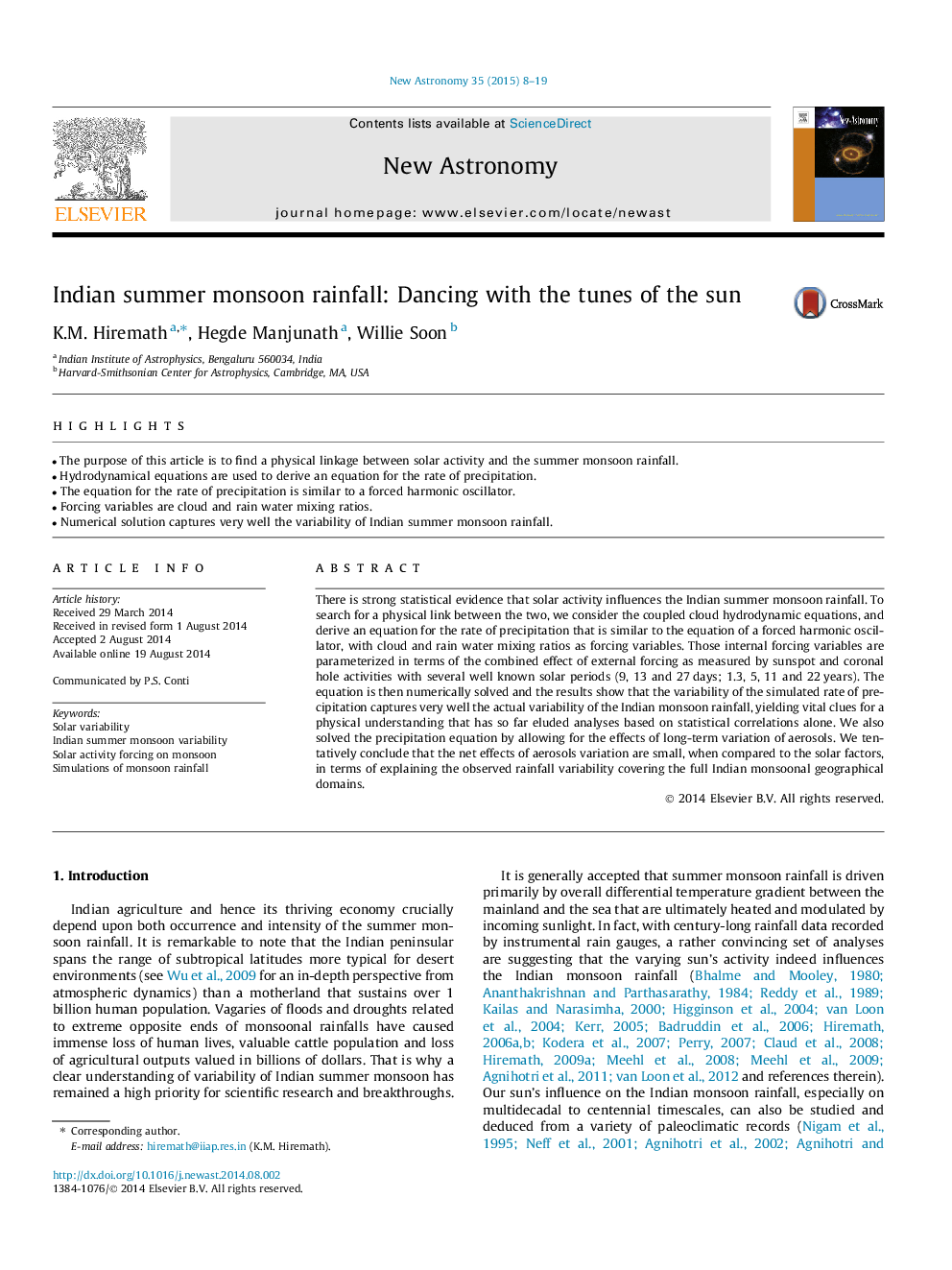| Article ID | Journal | Published Year | Pages | File Type |
|---|---|---|---|---|
| 1778850 | New Astronomy | 2015 | 12 Pages |
•The purpose of this article is to find a physical linkage between solar activity and the summer monsoon rainfall.•Hydrodynamical equations are used to derive an equation for the rate of precipitation.•The equation for the rate of precipitation is similar to a forced harmonic oscillator.•Forcing variables are cloud and rain water mixing ratios.•Numerical solution captures very well the variability of Indian summer monsoon rainfall.
There is strong statistical evidence that solar activity influences the Indian summer monsoon rainfall. To search for a physical link between the two, we consider the coupled cloud hydrodynamic equations, and derive an equation for the rate of precipitation that is similar to the equation of a forced harmonic oscillator, with cloud and rain water mixing ratios as forcing variables. Those internal forcing variables are parameterized in terms of the combined effect of external forcing as measured by sunspot and coronal hole activities with several well known solar periods (9, 13 and 27 days; 1.3, 5, 11 and 22 years). The equation is then numerically solved and the results show that the variability of the simulated rate of precipitation captures very well the actual variability of the Indian monsoon rainfall, yielding vital clues for a physical understanding that has so far eluded analyses based on statistical correlations alone. We also solved the precipitation equation by allowing for the effects of long-term variation of aerosols. We tentatively conclude that the net effects of aerosols variation are small, when compared to the solar factors, in terms of explaining the observed rainfall variability covering the full Indian monsoonal geographical domains.
